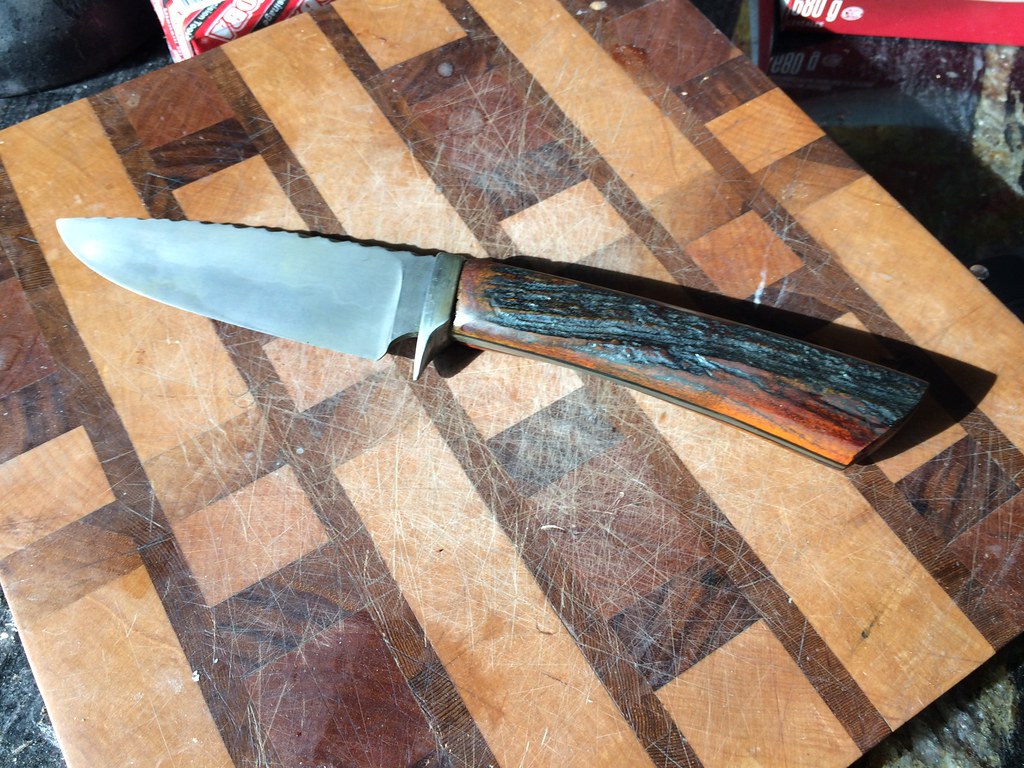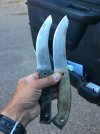- Joined
- Apr 13, 2017
- Messages
- 2,096
First off, I do appreciate all the helpful folks who contribute so much to the discussions.
This is a hunter skinner in O1, HT by Paul Bos, with dark ironwood scales and nickel silver guard. It is hand sanded to 2000 grit and buffed with 3 progressive compounds (it's shiny, what I'm calling a highly reflective finish, not mirrored, so as not to mislead). Guard to tip is about 3.75" and 1.5" tall, about 8.25" overall. I made it for my best friend from the first grade (we are 60). If you look closely his initials, MM, are filed into the spine in the front handle area, filled with blackened epoxy. His wife asked him who's WW?!?!?!
He used it to process two elk in Southern Oregon this fall and mentioned that it worked OK, but was not as efficient as it could be. It might be personal preference and what he's used to using. He couldn't really articulate the issues. I'm not a hunter so can't speak from experience but I have my own opinions on what issues he may have encountered, I'd like to hear yours. It is very sharp but the shape wasn't ideal for working inside an animal I guess. I am looking for critique, not only of utility but overall design and fit and finish. I have very thick skin so don't hold back.
This is a hunter skinner in O1, HT by Paul Bos, with dark ironwood scales and nickel silver guard. It is hand sanded to 2000 grit and buffed with 3 progressive compounds (it's shiny, what I'm calling a highly reflective finish, not mirrored, so as not to mislead). Guard to tip is about 3.75" and 1.5" tall, about 8.25" overall. I made it for my best friend from the first grade (we are 60). If you look closely his initials, MM, are filed into the spine in the front handle area, filled with blackened epoxy. His wife asked him who's WW?!?!?!
He used it to process two elk in Southern Oregon this fall and mentioned that it worked OK, but was not as efficient as it could be. It might be personal preference and what he's used to using. He couldn't really articulate the issues. I'm not a hunter so can't speak from experience but I have my own opinions on what issues he may have encountered, I'd like to hear yours. It is very sharp but the shape wasn't ideal for working inside an animal I guess. I am looking for critique, not only of utility but overall design and fit and finish. I have very thick skin so don't hold back.
Last edited:

 IMG_2237
IMG_2237 IMG_1063
IMG_1063